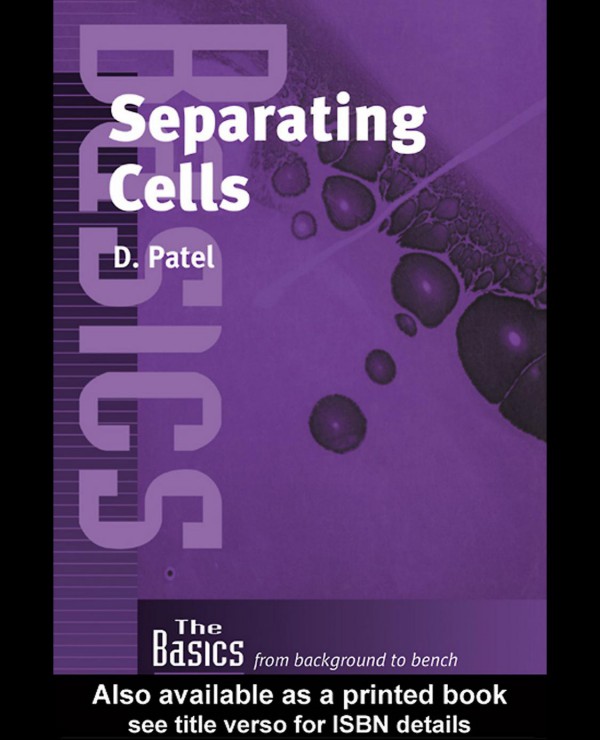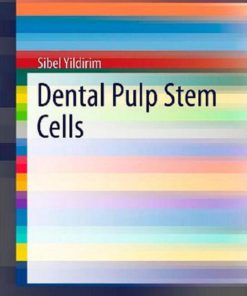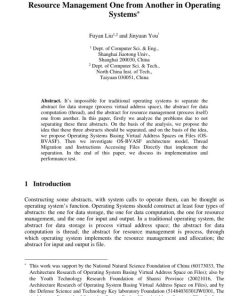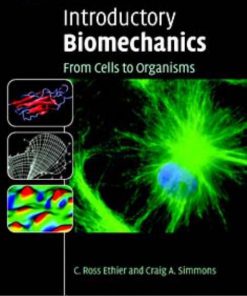Separating Cells 1st Edition by Dipak Patel 1859961487 9781859961483
$50.00 Original price was: $50.00.$25.00Current price is: $25.00.
Authors:Dipak Patel , Series:Pathology [158] , Tags:Science; Life Sciences; Cell Biology; Humanities , Author sort:Patel, Dipak , Ids:9780203015575 , Languages:Languages:eng , Published:Published:Jun 2000 , Publisher:Garland Science , Comments:Comments:Separating Cells: The basics provides user-friendly and practical guidance to the techniques most commonly used to separate cells. The book offers a concise overview of the fundamental principles and explains the ‘what, how and why’. This title will be of considerable interest to newcomers to these techniques.
Separating Cells 1st Edition by Dipak Patel – Ebook PDF Instant Download/Delivery. 1859961487, 9781859961483
Full download Separating Cells 1st Edition after payment
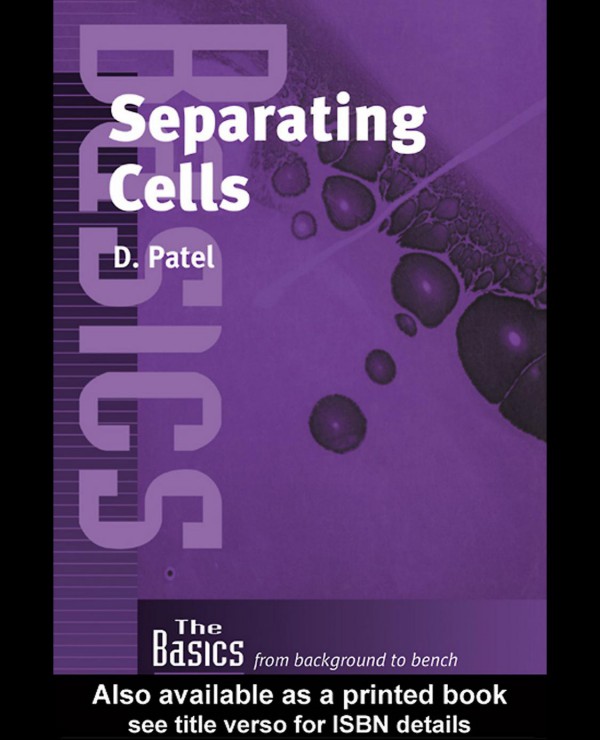
Product details:
ISBN 10: 1859961487
ISBN 13: 9781859961483
Author: Dipak Patel
Separating Cells: The basics provides user-friendly and practical guidance to the techniques most commonly used to separate cells. The book offers a concise overview of the fundamental principles and explains the ‘what, how and why’. This title will be of considerable interest to newcomers to these techniques.
Separating Cells 1st Table of contents:
Chapter 1 Preparation of cell suspensions
1 Diversity of cells
2. Why separate living cells?
3 Preparation of suspensions of single cells
3.1 Isolation of cells from suspension
3.2 Isolation of cells from solid tissues
Animal and human tissue
Other tissue
4 Viability measurements
5 Separation of viable and nonviable cells
6 Characterization of cells
6.1 Light microscopy
6.2 Phase-contrast microscopy
6.3 Electron microscopy
6.4 Confocal microscopy
6.5 Flow cytometry
6.6 Magnetic beads
6.7 Immunohistochemistry
Cell preparation
Fixatives
Antibodies
Mounting media
Detection method
6.8 Metabolic characteristics
Further reading
References
Protocol 1.1
Equipment
Reagents
Protocol
Protocol 1.2 Isolation of cells from peritoneal lavage
Equipment
Reagents
Protocol
Notes
Protocol 1.3 Isolation of cells from soft tissue by mechanical disruption
Equipment
Reagents
Protocol
Notes
Protocol 1.4 Preparation of vascular smooth muscle cells by mechanical disruption and outgrowth in culture
Equipment
Reagents
Protocol
Notes
Protocol 1.5 Preparation of endothelial cells from omental fat by mechanical disruption and enzymatic digestion
Equipment
Reagents
Protocol
Notes
Protocol 1.6 Isolation of neurons from rat ganglia by mechanical disruption and enzymatic digestion (Lindsay et al. 1991)
Equipment
Reagents
Protocol
Notes
Protocol 1.7 Disaggregation of embryonic and normal and malignant tissues
Equipment
Reagents
Protocol
Notes
Protocol 1.8 Separation of renal proximal tubule cells by tissue swelling and enzymatic digestion
Equipment
Reagents
Protocol
Notes
Protocol 1.9 Preparation of rat hepatocytes by continuous perfusion with enzyme solution
Equipment
Reagents
Protocol
Notes
Protocol 1.10 Release of cultured cells from substratum by trypsinization
Equipment
Reagents
Protocol
Notes
Protocol 1.11 Isolation of yeast protoplasts (spheroplasts)
Equipment
Reagents
Protocol
Notes
Protocol 1.12 Isolation of plant protoplasts
Equipment
Reagents
Protocol
Notes
Protocol 1.13 Cell viability determined by trypan blue exclusion
Equipment
Reagents
Protocol
Notes
Protocol 1.14 Cell viability determined by fluorescence staining methods
Equipment
Reagents
Protocol
Notes
Protocol 1.15 Cell viability determined by protein synthesis
Equipment
Reagents
Protocol
Notes
Protocol 1.16 Cell viability determined by uptake of radiolabeled thymidine
Equipment
Reagents
Protocol
Notes
Protocol 1.17 Cell preparation by cytocentrifuge for immunostaining
Equipment
Reagents
Protocol
Notes
Protocol 1.18 Characterization of cells by indirect immunofluorescence staining
Equipment
Reagents
Protocol
Notes
Protocol 1.19 Indirect (DAB) immunoperoxidase staining
Equipment
Reagents
Protocol
Notes
Protocol 1.20 Metabolic characterization of endothelial cells
Equipment
Reagents
Protocol
Notes
Chapter 2 Fractionation of cells by sedimentation methods
1 Introduction
2 Separation media
3 Iso-osmotic gradients
3.1 Percoll gradients
3.2 Nonionic iodinated media
3.3 Ficoll gradients
3.4 Preparation of iso-osmotic gradients
Discontinuous iso-osmotic gradients
Continuous iso-osmotic gradients
4 Choice of separation method
5 Separation of cells on the basis of size
6 Separation of cells on the basis of their density
6.1 Fractionation of blood cells using density-barrier methods
Platelets
Mononuclear cells
Polymorphonuclear cells
Erythrocytes
6.2 The purification of viable spermatozoa from bovine semen
6.3 The separation of viable and nonviable cells from disaggregated tissue and lavages
6.4 The fractionation of cells from disaggregated rat liver
6.5 Isolation of protoplasts from digested plant tissue
6.6 Enhanced isopycnic separation of cells by density perturbation
7 Concluding remarks
References
Protocol 2.1 Isolation of platelets from human peripheral blood (Ford et al., 1990)
Equipment
Reagents
Protocol
Notes
Protocol 2.2 The isolation of mononuclear cells from diluted blood (Bøyum, 1968)
Equipment
Reagents
Protocol
Notes
Protocol 2.3 The isolation of mononuclear cells from whole blood (Ford and Rickwood, 1990; 1992)
Equipment
Reagents
Protocol
Note
Protocol 2.4 The fractionation of human mononuclear cells (Bøyum, 1983)
Equipment
Reagents
Protocol
Note
Protocol 2.5 The isolation of polymorphonuclear cells from blood
Equipment
Reagents
Protocol
Notes
Protocol 2.6 Isolation of erythrocytes
Equipment
Reagents
Protocol
Protocol 2.7 The isolation of viable spermatozoa from bovine semen using Nycodenz gradients
Equipment
Reagents
Protocol
Note
Protocol 2.8 The isolation of viable spermatozoa from bovine semen using OptiPrep gradients
Equipment
Reagents
Protocol
Note
Protocol 2.9 Purification and enrichment of viable cells prior to further fractionation
Equipment
Reagents
Protocol
Note
Protocol 2.10 Isopycnic separation of rat liver cells using continuous Percoll gradients (Pertoft et al., 1977)
Equipment
Reagents
Protocol
Note
Protocol 2.11 Isolation of hepatocytes by differential pelleting
Equipment
Reagents
Protocol
Note
Protocol 2.12 Fractionation of sinusoidal cells (Brouwer et al., 1992)
Equipment
Reagents
Protocol
Sample preparation
Gradient preparation and centrifugation
Analysis of gradients
Protocol 2.13 The isolation and purification of plant protoplasts using OptiPrep gradients
Equipment
Reagents
Protocol
Determination of leaf osmolality (Sarhan and Cesar, 1988)
Protoplast isolation (Sarhan and Cesar, 1988)
Centrifugation
Note
Protocol 2.14 Isolation of immunologically distinct cell subpopulations using density perturbation methods
Equipment
Reagents
Protocol
Preparation of beads for labeling cells
Bead binding by cells
Fractionation of cells
Chapter 3 Centrifugal elutriation
1 Introduction
2 Principles
3 Equipment
3.1 Centrifuge
3.2 Separation chamber and rotor assembly
3.3 Pump
4 Conditions affecting separation
5 Applications of centrifugal elutriation
5.1 Synchronized cells
5.2 Blood cells
5.3 Liver cells
6 Advantages and disadvantages
References
Protocol 3.1 Standard procedure for cell separation by centrifugal elutriation
Equipment
Reagents
Protocol
Notes
Protocol 3.2 Separation of growth synchronous cells
Equipment
Reagents
Protocol
Notes
Protocol 3.3 Purification of rat hepatocyte couplets
Equipment
Reagents
Protocol
Notes
Chapter 4 Free-flow electrophoresis
1 Introduction
2 Main types of FFE equipment
2.1 ElphorVAP
2.2 Octopus-PZE
3 Buffers
3.1 Separation chamber buffers
Low ionic media
Triethanolamine-free media
3.2 Electrode chamber buffers
4 Preparation of cell samples for FFE
4.1 Types of cells separated by FFE
4.2 Purification and preparation of cell samples before FFE
5. FFE of cell samples
5.1 Preparation of FFE apparatus
5.2 Construction of cell fractionation profiles
5.3 Evaluation of cells separated by FFE
6 Factors affecting FFE
6.1 Cell clumping
6.2 Leaks
6.3 Bacterial contamination and blockages
6.4 Temperature
6.5 pH and conductivity
6.6 Filter membranes
7 Applications of FFE
References
Protocol 4.1 Purification and preparation of lymphocytes for FFE (Hansen et al., 1989)
Equipment
Reagents
Protocol
Protocol 4.2 Purification and preparation of platelets for FFE (Crook and Crawford, 1989)
Equipment
Reagents
Protocol
Note
Protocol 4.3 Purification and preparation of neutrophils for FFE (Eggleton et al., 1989)
Equipment
Reagents
Protocol
Note
Protocol 4.4 Purification and preparation of kidney cells for FFE (Kreisberg et al., 1977)
Equipment
Reagents
Protocol
Protocol 4.5 Purification and preparation of ascitic human cells for FFE (Pretlow et al., 1981)
Equipment
Reagents
Protocol
Protocol 4.6 Re-electrophoresis of FFE separated cells
Protocol
Note
Chapter 5 Affinity separation
1 Introduction
2 Separation by nonmagnetic techniques
2.1 Affinity to fibers and solid surfaces
2.2 Affinity chromatography
3 Separation by magnetic techniques
3.1 Immunomagnetic beads
3.2 Magnetic cell sorting using MACS Microbeads
3.3 Magnetic cell sorting using Dynabeads
3.4 Type of separation
3.5 Detachment of positively selected cells
3.6 Factors affecting immunomagnetic separation
Target cells
Antibodies
Other variables
3.7 Applications
References
Protocol 5.1 Isolation of monocytes by adherence to solid surfaces
Equipment
Reagents
Protocol
Note
Protocol 5.2 Isolation of HLA-DR positive lymphocytes using antibody-antigen binding
Equipment
Reagents
Protocol
Preparation of antibody column
Isolation of HLA-DR positive lymphocytes
Note
Protocol 5.3 Direct positive selection of CD4+ T cells from whole blood
Equipment
Reagents
Protocol
Preparation of Dynabeads M-450 CD4
Isolation of cells
Notes
Protocol 5.4 Preparation of antibody-coated cells for use in indirect positive selection
Equipment
Reagents
Protocol
Notes
Chapter 6 Flow cytometry
1 Introduction
2 The flow cytometer—instrumentation
2.1 Light source
2.2 Flow chamber
2.3 Optical components
2.4 Light scatter
2.5 Signal detection and processing
2.6 Fluorescence
2.7 Gating
3 Types of flow sorting
3.1 Cell sorting by droplet formation
3.2 Cell sorting by deflection of the sample stream
4 Factors affecting cell sorting
5 Separation—purity, yield and sterility
6. Applications
Further reading
References
Protocol 6.1 Checklist for initial steps in setting up a flow sorter
Protocol
Notes
Protocol 6.2 Guide to checking droplet delay time
Procedure
Notes
Protocol 6.3 Checklist for measuring the yield of sorted cells
Protocol
Protocol 6.4 Precautions taken to maintain sterility
Procedure
Sheath tubing
Sample collection
Sample delivery
List of manufacturers and suppliers
People also search for Separating Cells 1st:
separates chromosomes during cell division
yeast cells splitting into new cells
y-1 cells
z cells biology
You may also like…
eBook PDF
Dental Public Health A Primer 1st Edition by Patel Meera, Patel Nakul ISBN 1315357461 9781315357461
eBook PDF
Dental Public Health A Primer 1st Edition by Patel Meera, Patel Nakul ISBN 1857756479 9781857756470

